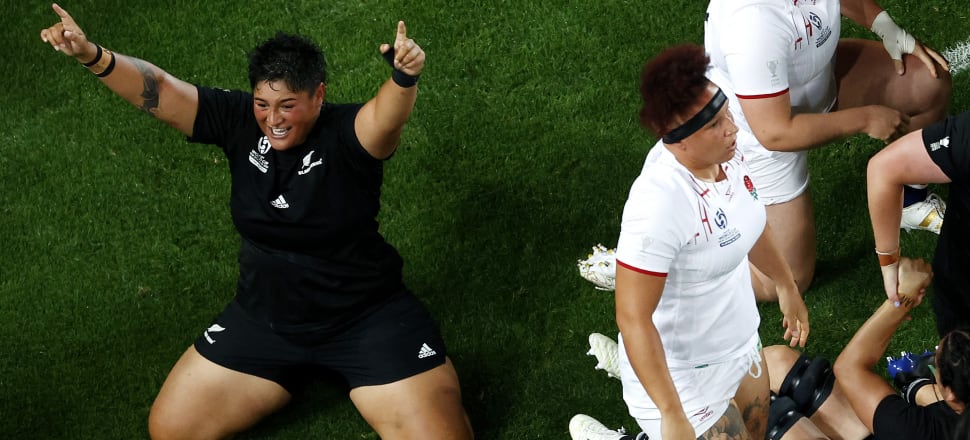
Last year, the Black Ferns captured the nation with their passion, drive and ability to have fun while doing the mahi. This year, Fonterra's chief operating officer Fraser Whineray says he will do his best to embrace more of that spirit to assist the long-term future of all New Zealanders.
Comment: I’ll be excited for 2023 if it is a little less exciting!
Last year I enjoyed my favourite Eden Park rugby match, the final of the Rugby Women’s World Cup. I’ve seen a few games at Eden Park, including the 2011 Rugby World Cup final in the very back row of the scaffolding stands. The Women’s World Cup final delivered both thrilling rugby and an unmatched atmosphere.
The vibe was even better than Ireland’s 2011 Eden Park victory over Australia, where it was incredible how many Irish suddenly ‘appeared’ in the crowd from half-time.
READ MORE: * Tory Whanau: I want people to be proud of their city again * What Dunedin's mayor wants for Christmas
The Black Ferns entertained us to an almost riotous level. I hope to see them grow their performance and the game for all Wahine Toa in 2023.
In contrast to that excitement, my wish is that 2023 is a little less exciting overall.
1. Making plans
It’s fair to say the past couple of years have been volatile and challenging for almost everyone on the planet.
While this has created some opportunities to do things differently, I am keen to see a year that’s a little more boring.
This doesn’t mean doing nothing.
It’s more about individuals, families, companies and countries being able to proactively entertain and achieve their plans, rather than be forced onto the back foot in reacting to volatility.
2. Trade humming
In 2023 everyone will be addressing the economic and wellbeing challenges of this almost-post Covid environment.
In that environment, it’s essential to have our global supply chain humming.
As a small trading nation, New Zealand’s exports keep our imports coming in, both physically and financially, and therefore keep New Zealand functioning.
The resilience shown by all parts of our export value chain over the past couple of years is tremendous, but very challenging.
The supply chain includes those looking after the productive land, and how they effectively capture sunlight, water and carbon from the atmosphere into a range of increasingly valuable formats to reliably sell overseas.
3. Ports recruiting
Many parts of the supply chain, invisible to most, remain under serious stress.
Not only is this undermining our exporters, it will increasingly come to the attention of most New Zealanders when the lack of import capacity stops people consuming or working.
That’s the thing with infrastructure, it’s all good until it’s not.
I wish that all ports urgently lift their game in terms of recruitment and that Port of Tauranga gets a wharf extension because when trade constraints bite it will be too late.
4. Cutting carbon
There are a few projects on the go at Fonterra that I’m personally looking forward to seeing the results of.
Milk-E, the country’s first full-size electric milk tanker, is collecting milk in the Waikato, and we’re learning a lot about what the future of electric heavy transport looks like in a provincial setting.
There’s a lot to work through, but when you buy 47 million litres of diesel a year to drive 90 million kilometres to collect milk, having renewable electricity at the equivalent of 30 cents per litre is fairly compelling maths for our farmer owners.
It also means less of their hard-earned export dollars are thrown at the next passing diesel (and no longer crude oil) tanker.
Biomass boilers are being installed in the North and South Islands to displace coal with the majority of that removed by 2030, and the balance by 2037. Large renovations on sites during short winter shuts aren’t as simple as borrowing the neighbour’s trailer and heading to your local Farm Source store or Mitre 10 (another Kiwi co-op). Teams are innovating and partnering every step of the way.
By the end of this season, we will be down to only six sites out of 29 that touch coal.
And when you’re looking at the great New Zealand landscape on a domestic flight, take comfort that the current and declining emissions from our coal use represent only 10 percent of New Zealand’s aviation emissions.
We’ll also be bringing the second PolyJoule battery into the country. Launched last year, in partnership with a MIT spinoff, PolyJoule is an organic, low-cost, safe, sustainable long-life grid battery, which may also be manufactured here in time.
5. Complex thought
Finally, if I’m allowed one more wish beyond next Saturday’s Powerball numbers, I’d like to see deeper and more constructive debate, particularly around sustainability. The world is complex and this is not helped by over-simplified memes that are highly attractive.
We like this over-simplification because it doesn’t require as much energy for the brain.
Complex thought cannot be summarised in a tweet, let alone multiple complex and interwoven considerations.
The world increasingly likes to cast heroes and villains, right and wrong, good and evil. Diversity of thought does not live there, nor does quality kōrero, or effective long-term solutions.
Last year, the Black Ferns captured the heart of the nation with their passion, drive and ability to have fun while doing the mahi. This year, I’m going to do my best to embrace more of that spirit, work hard and constructively engage to assist the long-term future of all New Zealanders.







